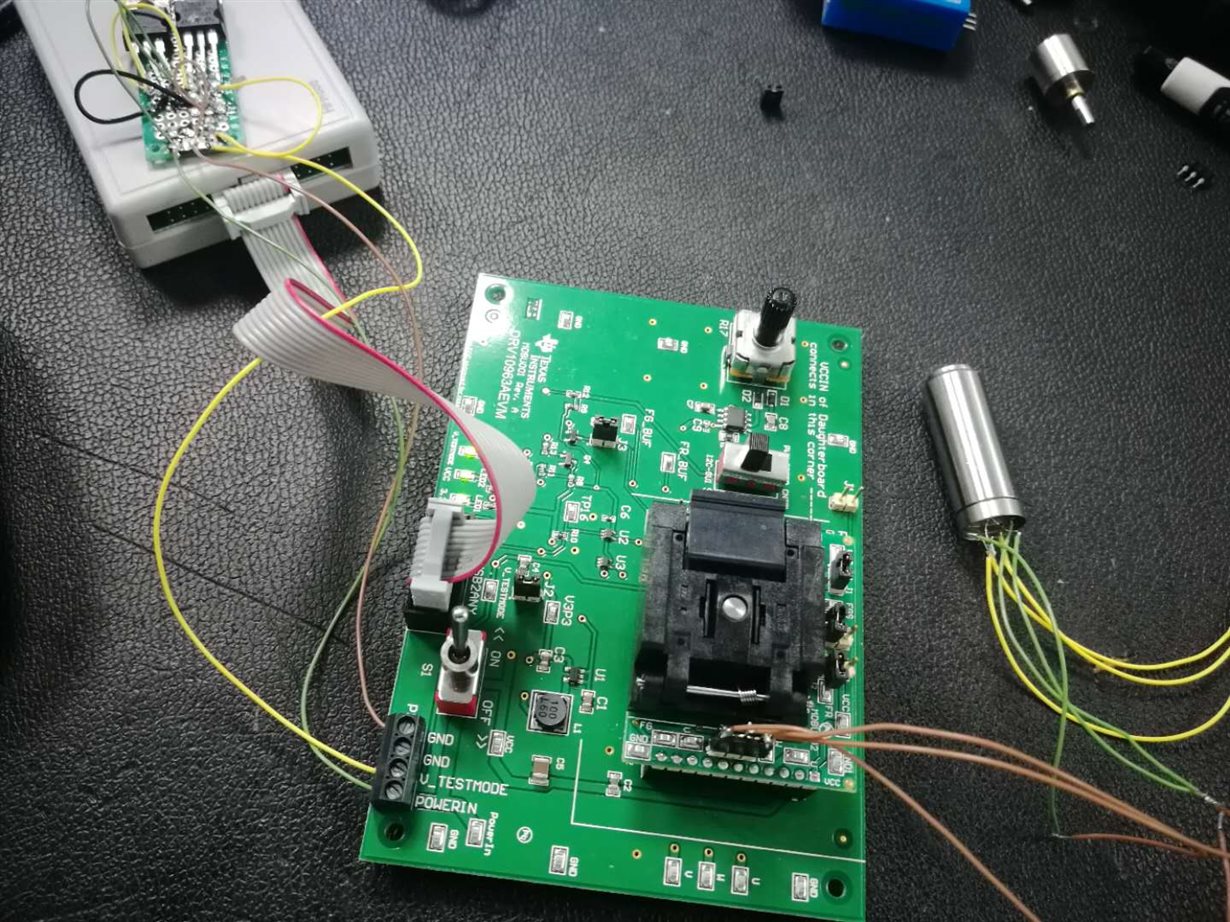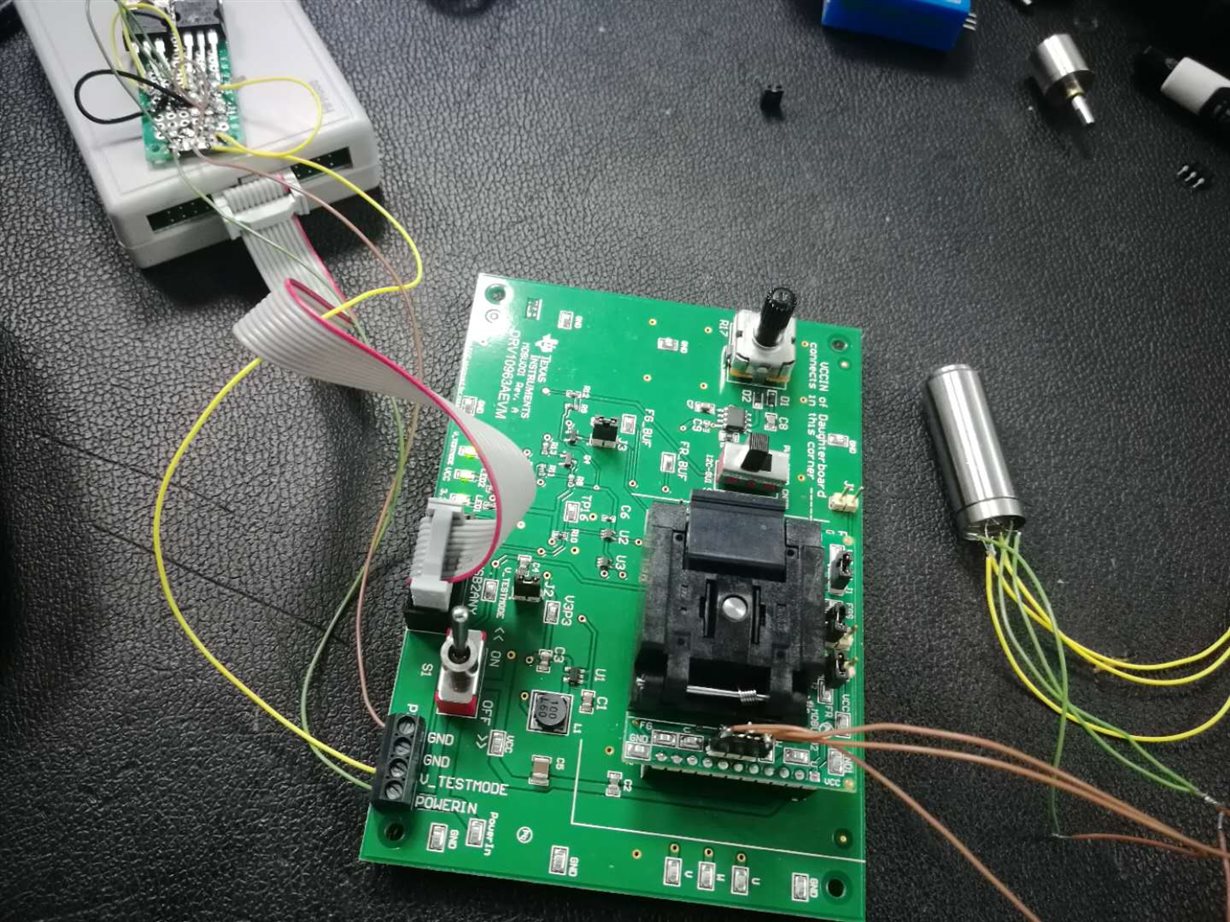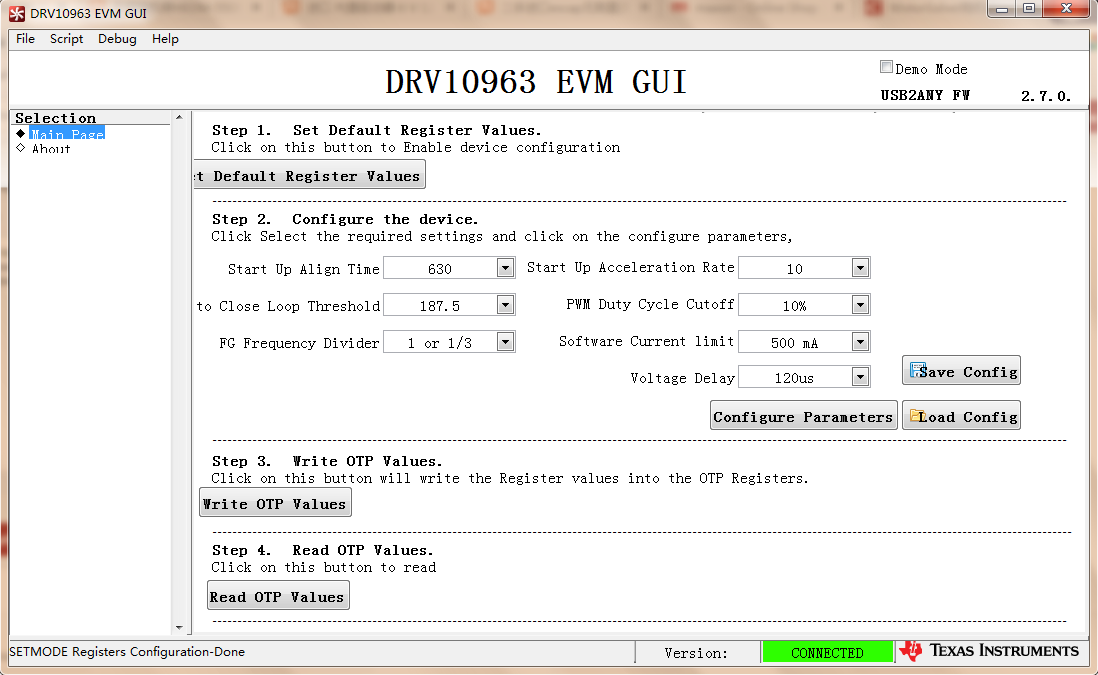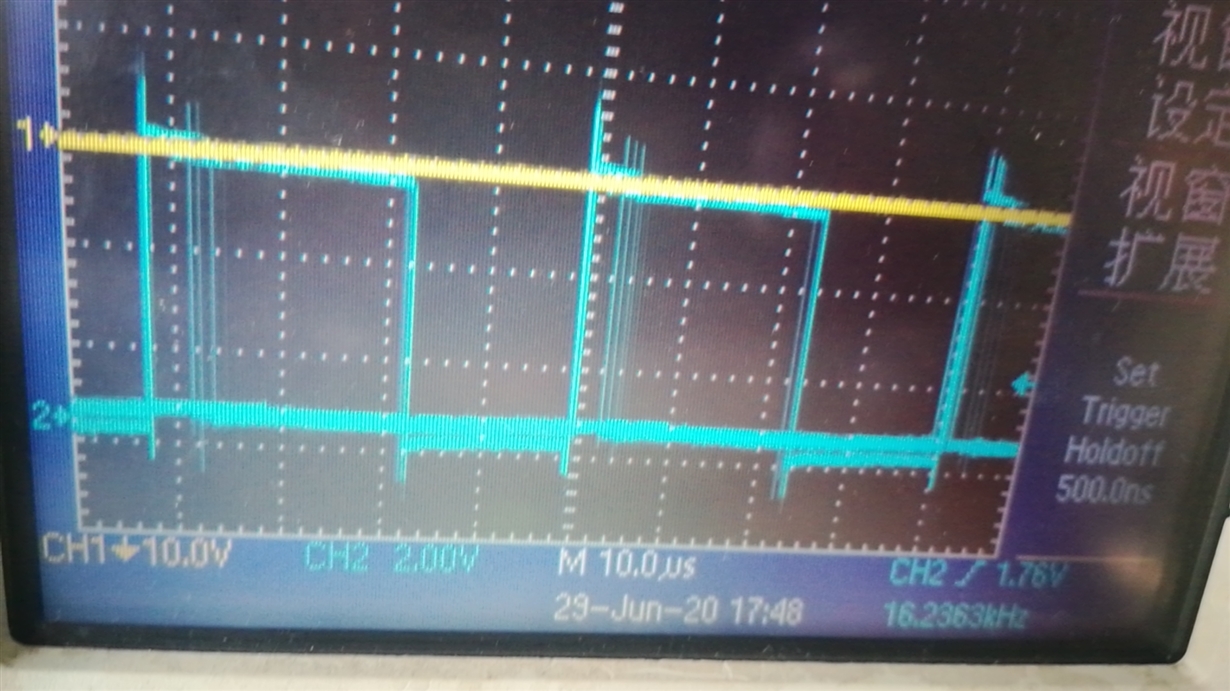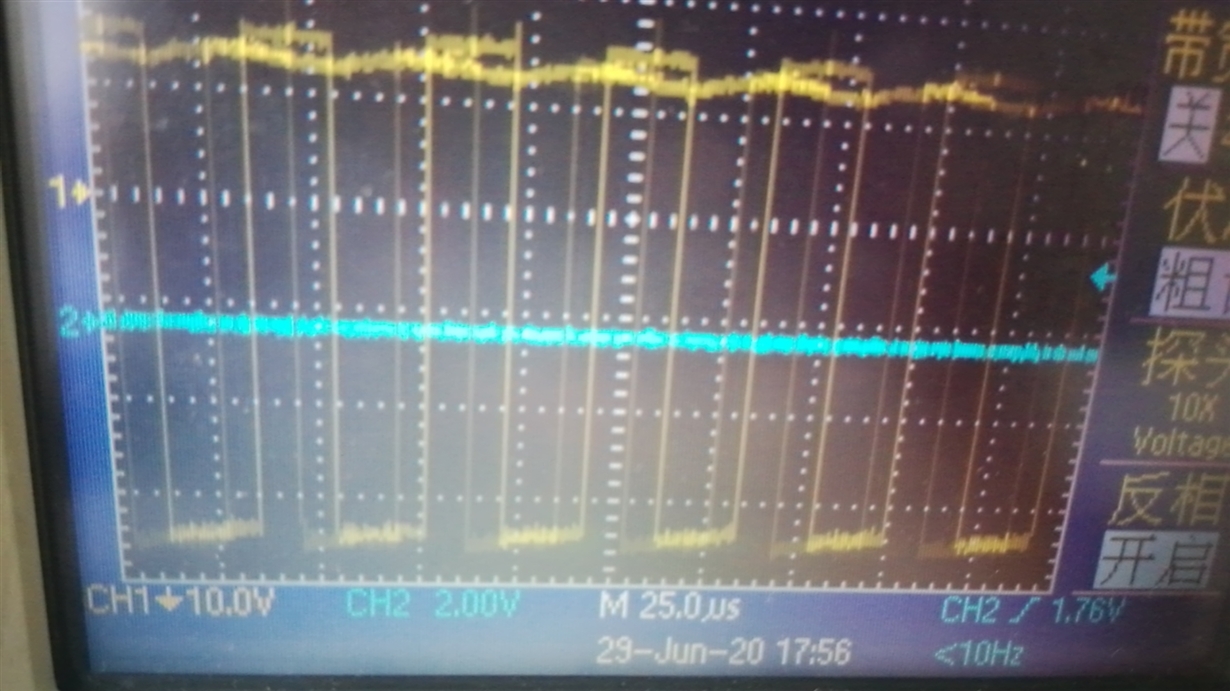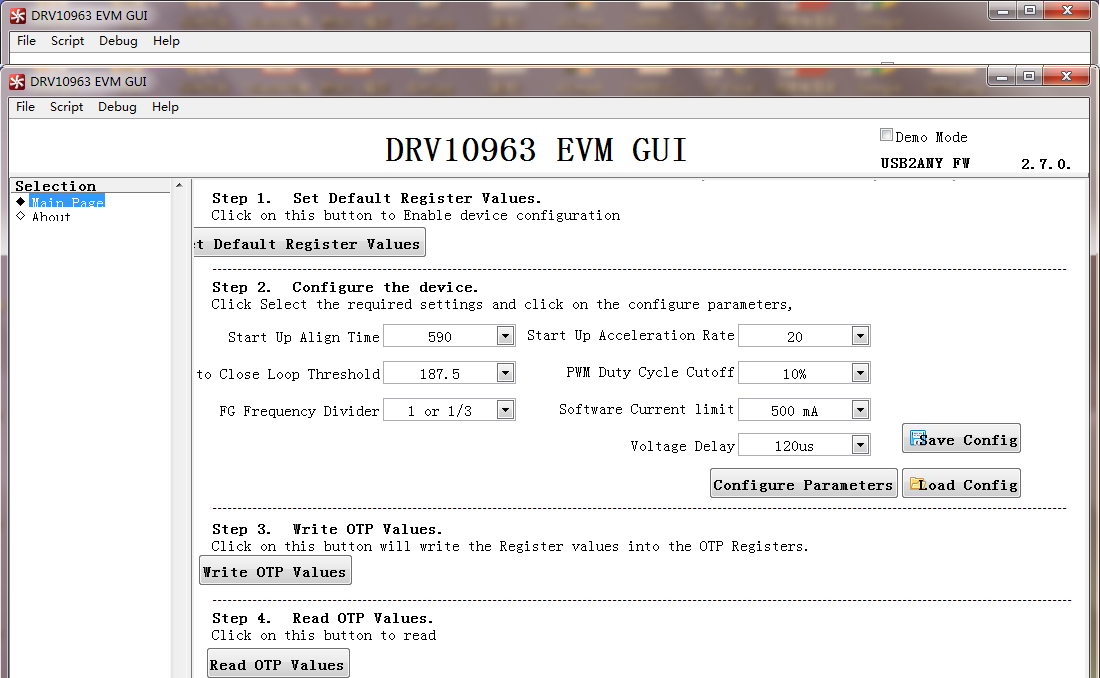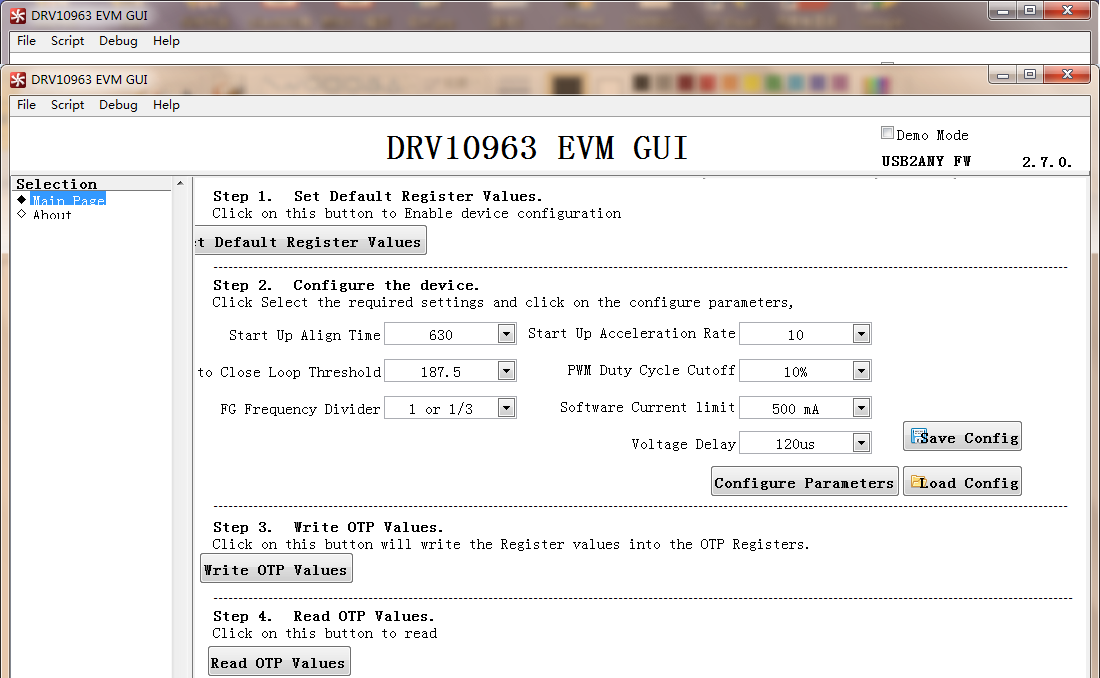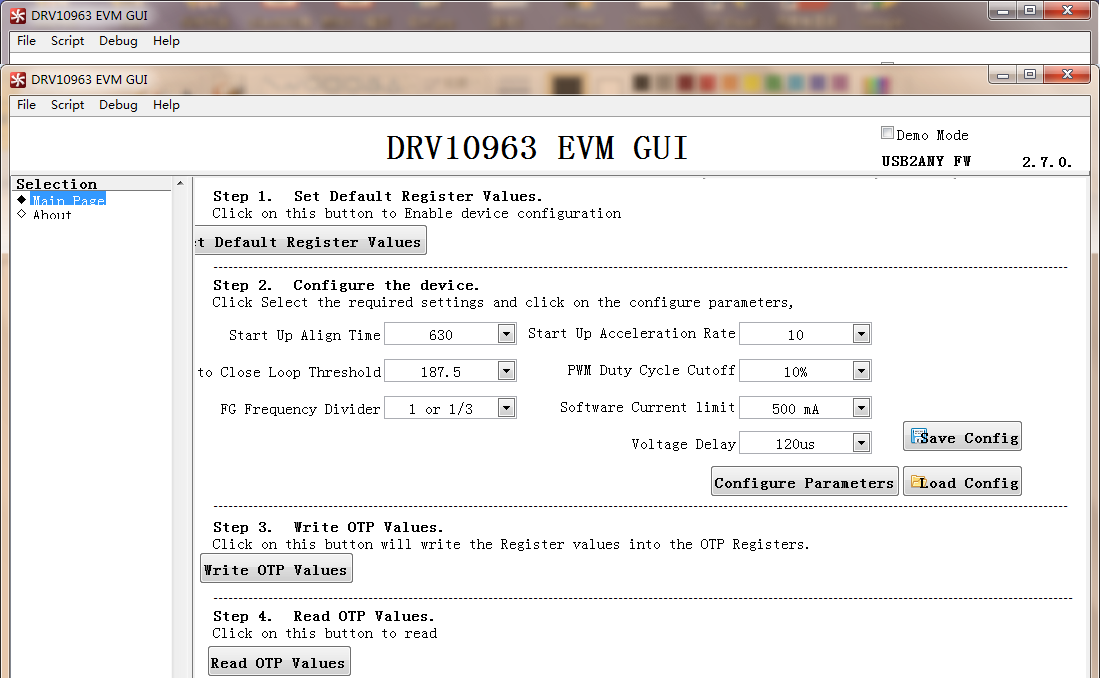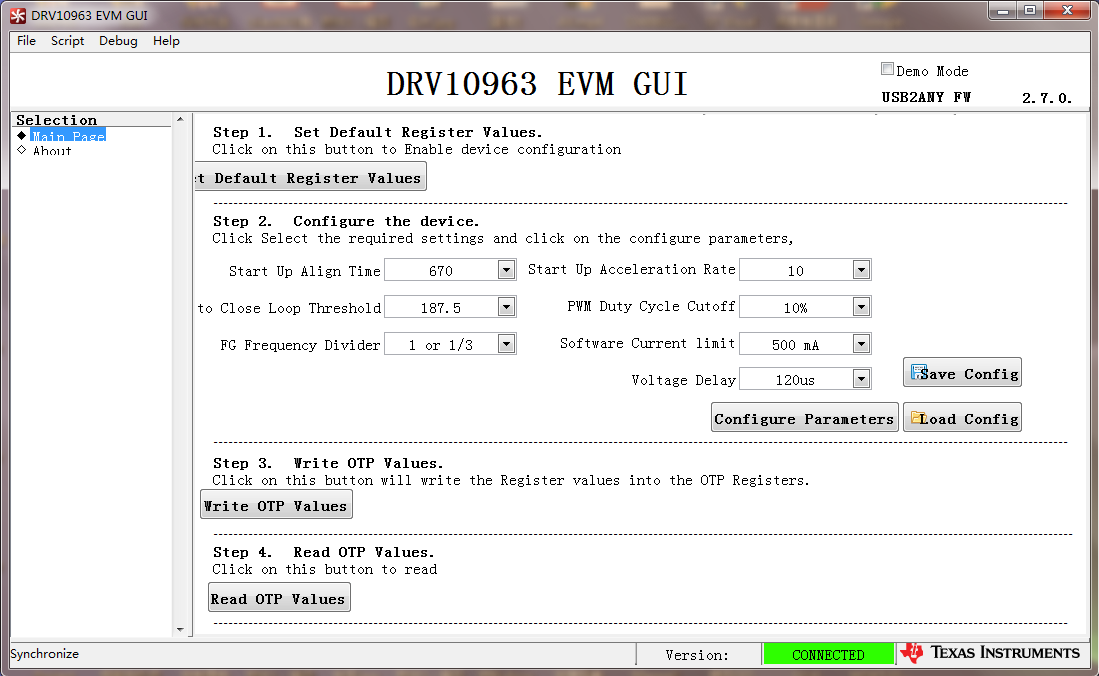Other Parts Discussed in Thread: DRV10963, DRV10983, DRV10974, USB2ANY, DRV10987
Hi Team,
The customer is developing an integrated brushless motor. He used DRV10963AEVM to drive, and the motor started intermittently.
He measured with an LRC bridge:
- Brushless motor phase resistance is 6.2 ohms
- Phase-to-phase inductance is around 86
No matter how the software is adjusted, the brushless motor still cannot run normally. Would you kindly help to check the reason?
Thanks,
Annie


